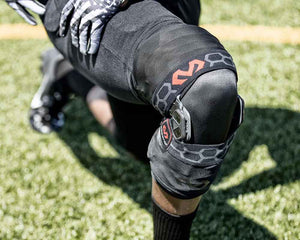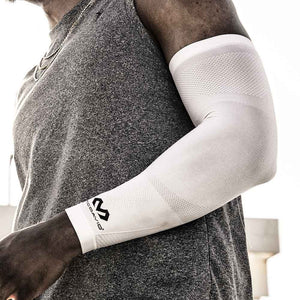Need a way to recover quickly from your last workout so you're ready to go for another training session or competition? If you've heard about kinesiology tape you might be wondering if this type of sports product is the right pick for you. Knowing more about kinesiology tape will help you make an informed decision, and realize the potential benefits of using it.
What is Kinesiology Tape?
Kinesiology tape is like athletic (elastic therapeutic) tape that you can apply to different parts of your body to relieve sports-related stress. This type of tape facilitates fluid drainage and boosts circulation, by lifting up your skin in specific areas. This in turn helps decrease inflammation. You can apply the tape directly to skin by using different I, Y and X shapes, and the tape is long-lasting for your convenience.
How it Helps
Kinesiology tape is designed to help with sports-related injuries, such as Achilles tendonitis, strains, sprains, shin splints, instability and swelling. Because the tape helps lift up the skin, it allows for increases in blood flow, a reduction in swelling, pain relief and healing. This is crucial for accelerated rates of muscle and joint recovery after strenuous workouts -- and during times of pain and injury.
Who Uses Kinesiology Tape?
Many professional athletes use kinesiology tape, claiming it helps with muscle pain, soreness or weakness. Other people who use kinesiology tape are those seeking pain management and reduced inflammation, people who work in professions that are physically taxing, and physical therapy treatment patients.
Main Benefits
Research studies examining effects of kinesiology tape are mixed, but many do show a benefit. One review published in 2014 in The Physician and Sports Medicine says kinesiology tape has the potential to reduce pain in people with musculoskeletal injuries, and may be useful when combined with other traditional therapies for such injuries.Coastal Orthopedics suggests this type of tape appears to improve muscles' ability to contract, helps relieve pain, improves muscle fatigue, prevents cramping, appears to improve range of motion in people with tight joints and muscles, and acts as a painkiller for people suffering from chronic muscle or joint pain. Valeo Health Clinic says you can reap a variety of health benefits from kinesiology tape. For example, it may help with coordination and movement in athletes (to aid in injury prevention), improve physical performance, and is beneficial for injuries like sprains, tendonitis, golfer's elbow, rotator cuff problems, shin splints, tennis elbow, and carpal tunnel syndrome.Kinesiology tape may have additional pain relief benefits in addition to just post-training recovery. For example, a 2013 study published in the Journal of Physical Therapy Science found that kinesiology tape significantly helped alleviate menstrual pain, and was an effective method for reducing premenstrual symptoms in women.
Valeo Health Clinic says you can reap a variety of health benefits from kinesiology tape. For example, it may help with coordination and movement in athletes (to aid in injury prevention), improve physical performance, and is beneficial for injuries like sprains, tendonitis, golfer's elbow, rotator cuff problems, shin splints, tennis elbow, and carpal tunnel syndrome.Kinesiology tape may have additional pain relief benefits in addition to just post-training recovery. For example, a 2013 study published in the Journal of Physical Therapy Science found that kinesiology tape significantly helped alleviate menstrual pain, and was an effective method for reducing premenstrual symptoms in women.
How Kinesiology Tape Aids in Muscle Recovery
There are several reasons kinesiology tape helps with quick muscle recovery after workouts. The main reason is a reduction in swelling and inflammation post workout. This happens as the tape reduces pressure in the lymphatic drainage system, says Starkwood Chiropractic.How does kinesiology tape ease pain you might be wondering? Because the tape lifts your skin, pressure is relieved on pain receptors located underneath the skin. Additionally, kinesiology tape improves circulation, helping to deliver oxygen and remove waste products in overused or injured muscles. This in turn helps rid the body of lactic acid more quickly, aiding in muscle recovery and rehabilitation. Athletes are able to reap benefits of improved performance as a result, and can get back on the field or court sooner.
Why Choose Kinesiology Tape?
The benefits of kinesiology tape are endless, but a few perks are especially noteworthy. For example, this type of tape is flexible, light weight, and can be worn for several days at a time (has long-wearing durability). Some kinesiology tape is pre-cut for quick and easy use. The light-weight tape is easy to take with you when on-the-go or traveling.And, this type of athletic gear is way more affordable than rehabilitation therapy of a sports-related injury. It's convenient to use and easy to apply (once you know what you're doing).
How to Apply It
Before you apply kinesiology tape, be sure your skin isn't scratched, sore or broken. If you have an allergic reaction to the tape, remove it right away. Make sure your skin is clean, dry and free from lotions before applying kinesiology tape. It's best to seek advice from a trained professional (especially if you have injuries) to determine the best way to apply the tape based your individualized needs. You'll apply an anchor end (one piece of tape) to your skin first, and there won't be tension on anchor ends. Then, you'll apply another piece of tape to provide therapeutic tension on your muscle or joint. Ask your physiotherapist or other credentialed health professional how to do this properly. Finally, you'll apply a second anchor piece of tape (without tension).
You'll apply an anchor end (one piece of tape) to your skin first, and there won't be tension on anchor ends. Then, you'll apply another piece of tape to provide therapeutic tension on your muscle or joint. Ask your physiotherapist or other credentialed health professional how to do this properly. Finally, you'll apply a second anchor piece of tape (without tension).
Bottom Line
Studies pertaining to kinesiology tape are mixed, but many show benefits of using this type of tape for pain relief, muscle recovery, and even increases in muscle strength (likely due to pain relief).Even though study results vary, numerous athletes swear by using kinesiology tape for better workouts, improved muscle recovery after workouts, and decreases in post-workout pain. So if you're wondering if kinesiology tape is the right fit for you, give it a try -- it won't hurt! Be sure to see a credentialed professional to learn how to apply it properly before your first use.







 Valeo Health Clinic
Valeo Health Clinic You'll apply an anchor end (one piece of tape) to your skin first, and there won't be tension on anchor ends. Then, you'll apply another piece of tape to provide therapeutic tension on your muscle or joint. Ask your physiotherapist or other credentialed health professional how to do this properly. Finally, you'll apply a second anchor piece of tape (without tension).
You'll apply an anchor end (one piece of tape) to your skin first, and there won't be tension on anchor ends. Then, you'll apply another piece of tape to provide therapeutic tension on your muscle or joint. Ask your physiotherapist or other credentialed health professional how to do this properly. Finally, you'll apply a second anchor piece of tape (without tension).